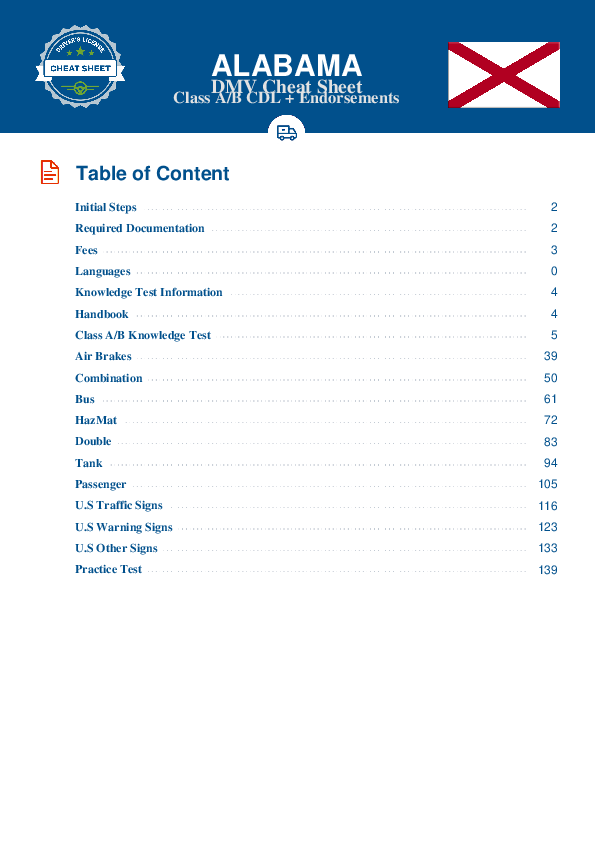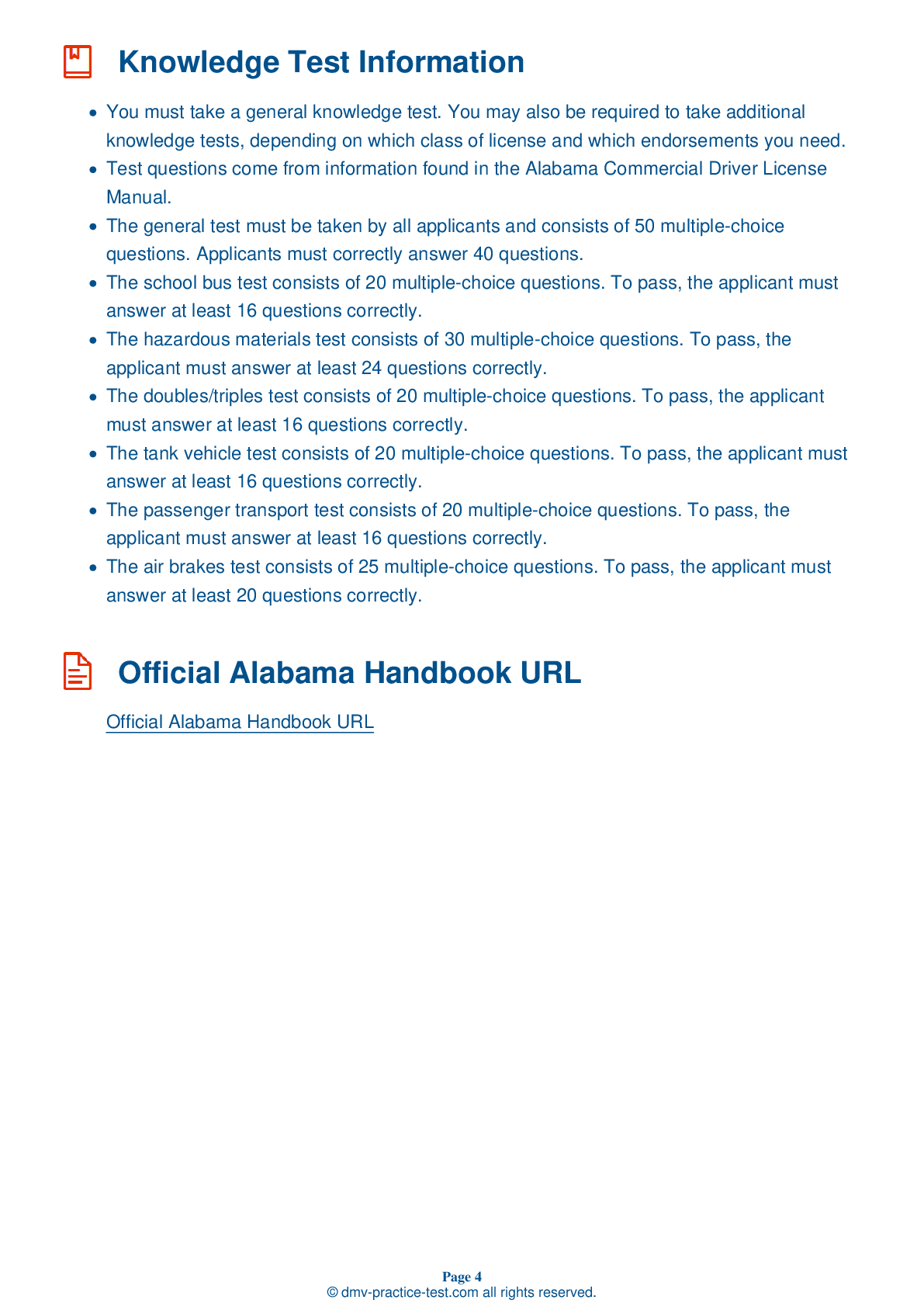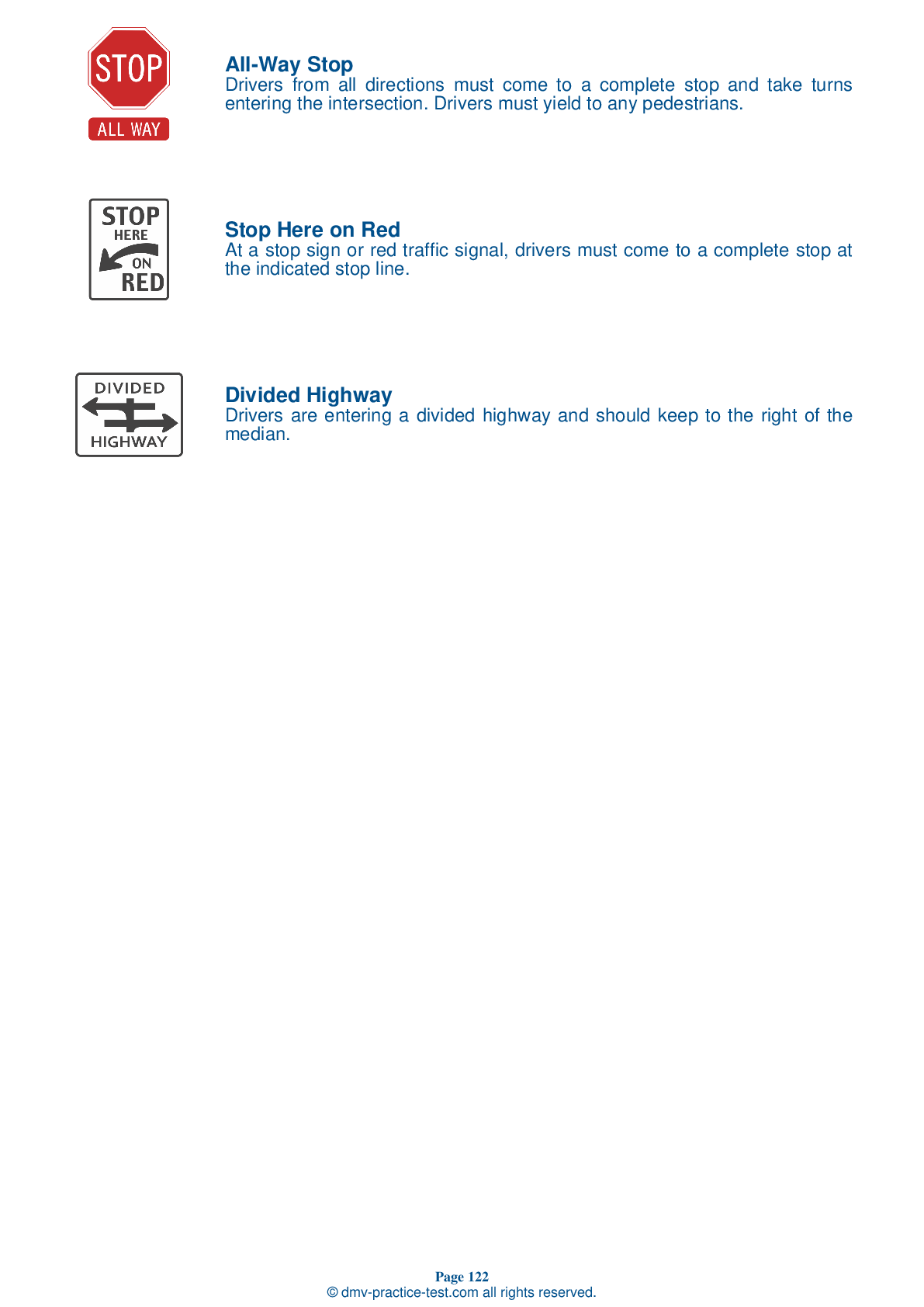Combination Vehicles Practice Test | Alabama 2025 #1 Page 2 of 3
Train for FREE online with our Alabama CDL combination vehicle test. The official exam test consists of several obligatory parts, with all of them checking your knowledge of different blocks of road rules. If you need to obtain a AL combination license in 2025, practice as much as possible. Free sample tests published on our website will help you check and improve your knowledge and boost your grades. Please bear in mind that DMV requirements for issuing a combination license may vary from state to state.
8 . During a trip, which shut-off valves should be open?
When starting a trip, be sure that all shut-off valves are in the open position, except for the last valves on the rear trailer. It is important that air reaches the brakes on all trailers and that the air is not able to escape from the back of the vehicle.
9 . When glad hands are coupled, the seals should be pressed together at a ____ angle.
When coupling, be sure to couple the proper glad hands. When glad hands are connected, the seals should be pressed together at a 90-degree angle.
10 . Trailers built before ____ are not required to have spring brakes.
Trailers built before 1975 are not required to have spring brakes. When parking a trailer without spring brakes, be sure to use wheel chocks to prevent the trailer from rolling.
11 . When driving a vehicle equipped with an Anti-Lock Braking System (ABS), brakes should be applied:
When driving a vehicle with ABS, you should brake in the same manner as you would in a vehicle without ABS.
12 . Keeping cargo centered on a rig can:
A rollover is more likely if cargo is unevenly loaded in a rig. To help prevent a dangerous rollover, it is important to keep a load as centered on the rig as possible.
13 . After finishing a pre-trip inspection, you should:
Before a trip, you should ensure that air reaches all air brakes on all trailers by opening up the rear emergency line and service line shut-off valves to listen for escaping air. Close both shut-off valves before beginning to drive.
14 . ____ are the cause of more than half of all accident-related truck driver deaths.
More than half of all accident-related truck driver deaths are a result of truck rollovers. To help prevent a rollover, be sure to load cargo low to the ground and centered on your rig. Take corners slowly and carefully.
See the exact questions that will be on the 2025 Alabama DMV exam.
99.2% of people who use the cheat sheet pass the FIRST TIME
Lillian MCcranie explains how our CDL study guide was helpful in passing the exam and recommends it to everyone.
Cameron tells us how he purchased the CDL exam, and found it to be a useful tool which helped him pass the exam and find a job.



